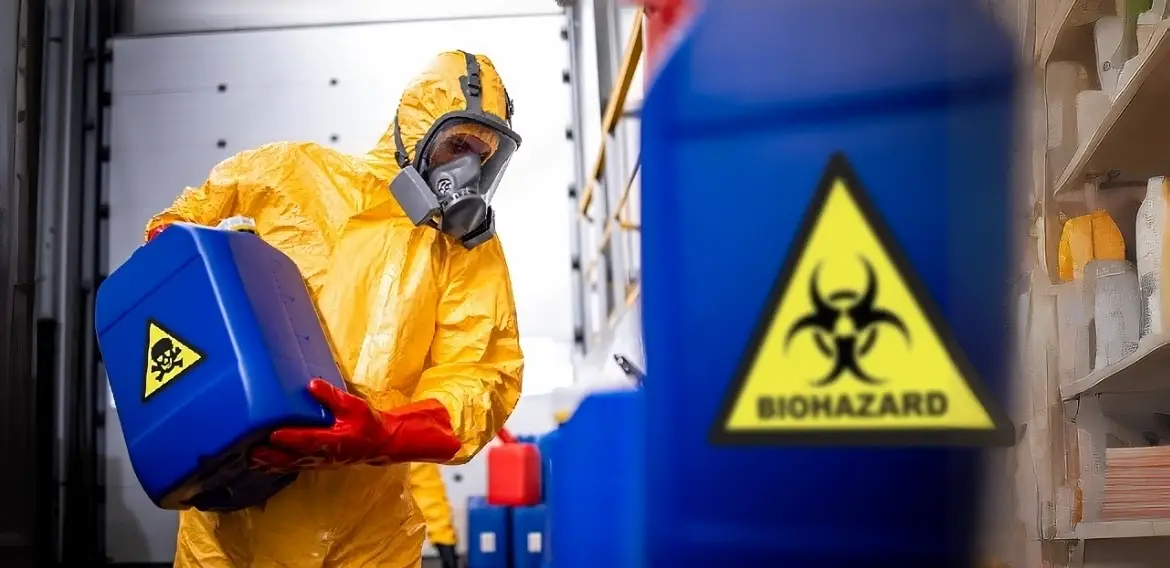In the ever-evolving landscape of New Zealand’s industries, chemical safety remains paramount. With the increasing use of hazardous chemicals in various sectors, understanding and implementing safety measures is crucial. This blog post, brought to you by Rifft Solutions, delves deep into the intricacies of chemical safety in New Zealand workplaces.
Understanding the Risks of Chemical Exposure
The role of chemicals in various industries:
Chemicals play a pivotal role in numerous industries, from manufacturing to agriculture. Whether it’s a sodium hydroxide-based cleaner used in sanitation or a chemical substance vital for production, their presence is undeniable. However, with great utility comes great responsibility.
Health implications of chemical mishandling:
Chemical exposure can lead to a myriad of health issues. From chemical burns to carcinogenic effects, the risks are vast. Accidental release measures should always be in place to prevent toxic gas emissions and other harmful chemical reactions.
Legal implications and penalties for non-compliance:
In New Zealand, non-compliance with the Hazardous Substances Regulations can lead to severe penalties. WorkSafe, the primary regulatory body, ensures that businesses adhere to the HSNO (Hazardous Substances and New Organisms Act 1996) guidelines. Failing to do so can result in hefty fines and legal repercussions.
Documentation and Training
The importance of up-to-date chemical information:
Safety Data Sheets (SDS) are essential documents that provide detailed information about hazardous chemicals. These sheets, aligned with the Globally Harmonised System (GHS 7), offer insights into chemical handling, storage, and safety precautions.
Risk assessments for each chemical:
Every chemical presents its unique risks. A comprehensive risk register should be maintained, detailing the chemical risk associated with each substance. This aids in ensuring health and safety while handling these chemicals.
Distributing safety information to employees:
Knowledge is the first line of defense. Distributing safety information, including Safety Data Sheets and safety measures, ensures that employees are well-informed and prepared.
Personal Protective Equipment (PPE)
Selecting the right PPE for chemical handling:
Not all PPE is created equal. Depending on the chemical in question, specific equipment like gloves, goggles, or respirators might be required. It’s essential to choose the right PPE to prevent chemical burns, exposure, and other hazards.
Regular inspection and maintenance of PPE:
PPE is only as good as its condition. Regular inspections ensure that they remain effective against chemical contamination and exposure.
Safe Storage Protocols
Legal requirements for chemical storage:
In New Zealand, the storage of hazardous chemicals is regulated by the Hazardous Substances Regulations. This includes obtaining a compliance certificate and ensuring location compliance.
Best practices for labeling and container selection:
Clear labeling, aligned with the GHS 7 standards, is crucial. Additionally, choosing the right container prevents chemical reactions, especially when storing incompatible chemicals together.
Personal Hygiene and Cleanliness
Ensuring no contamination outside controlled areas:
Areas where chemicals are handled should be isolated. This prevents chemical contamination in non-controlled zones, ensuring the safety of all personnel.
Handwashing protocols after handling chemicals:
Simple yet effective, handwashing is a primary defense against chemical exposure. Especially after handling chemicals, it’s crucial to wash hands thoroughly.
The dangers of consuming food or drink near chemicals:
Eating or drinking near chemicals increases the risk of ingestion. Always ensure that food and beverages are consumed away from chemical handling areas.
Emergency Response and Reporting
First-aid measures for chemical exposure:
Immediate response can mitigate the effects of chemical exposure. Whether it’s flushing the eyes after an accidental splash or treating chemical burns, first-aid measures are crucial.
Reporting and addressing chemical spills:
In the event of chemical spills, immediate reporting is essential. This allows for swift action, minimizing risks and ensuring safety.
Training employees for emergency situations:
Preparedness is key. Regular training sessions, covering topics from the hierarchy of controls to accidental release measures, equip employees to handle emergencies.
In conclusion, chemical safety in New Zealand workplaces is a multifaceted issue. From understanding the risks to ensuring compliance, every step is crucial. At Rifft Solutions, we prioritise safety above all else. With the right knowledge, tools, and practices, we can create a safer environment for all.

